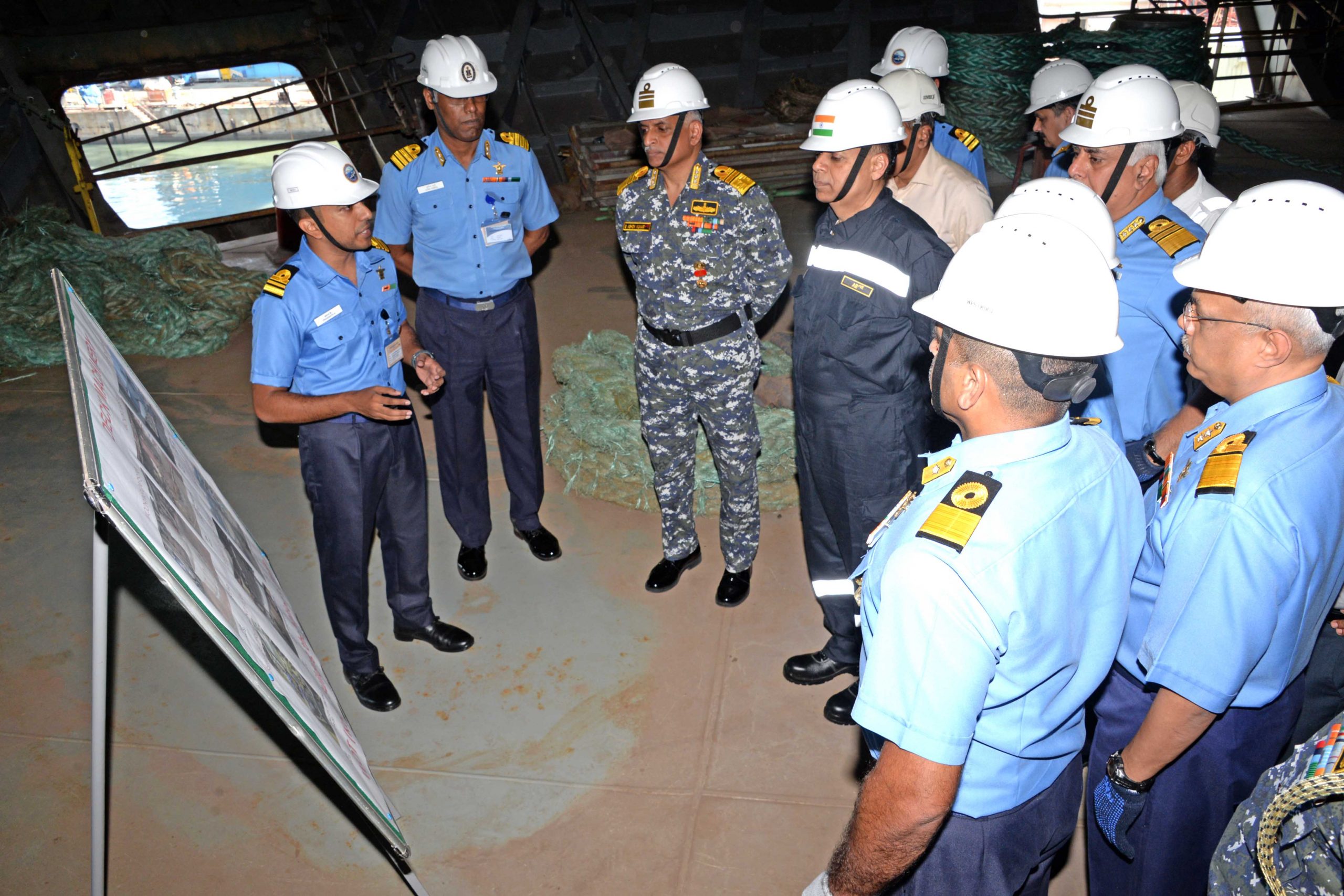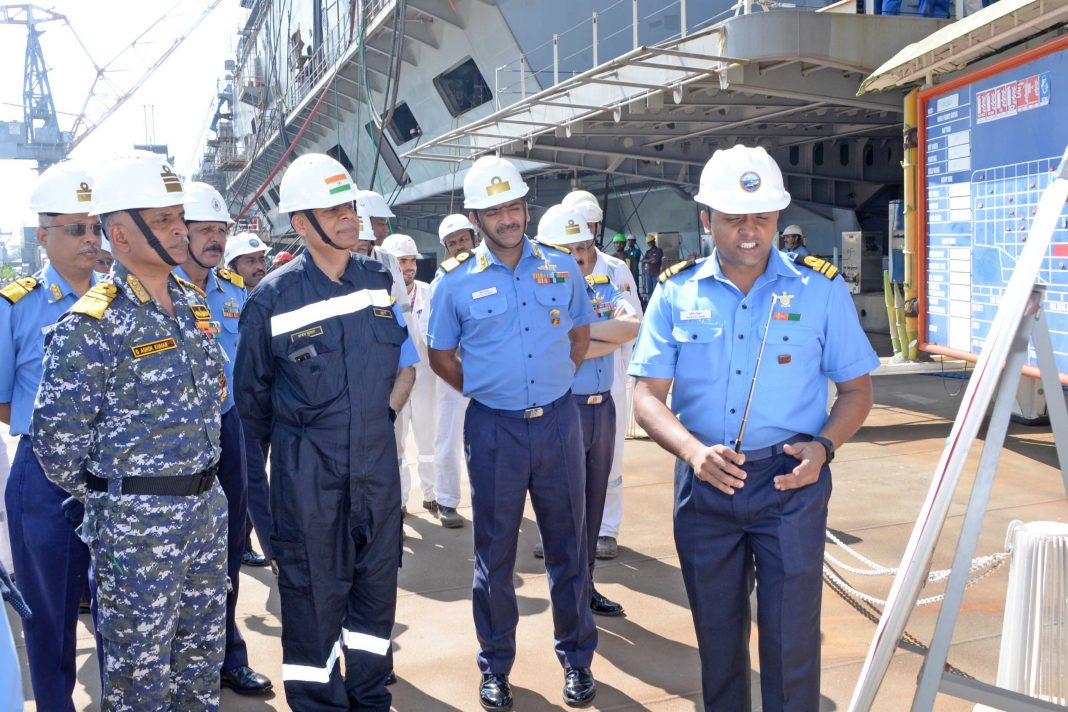On January 20, 2020, the Defence Secretary of India, Ajay Kumar, along with Vice Naval Chief Of Staff Vice Admiral Ashok Kumar, Chief of Material, Vice Admiral G.S. Pabby and Controller of Warship Production and Acquisition from Integrated Headquarters at the Naval Department of the Ministry of Defence, Vice Admiral S.R. Sarma critically reviewed the present status of the Indigenous Aircraft Carrier (IAC -1) presently being built at Cochin Shipyard Limited (CSL). Senior officers from the Warship Overseeing Team and Carrier Acceptance & Trials Team were also present.

The high-powered meeting was the first one of its kind held after the commencement of Phase -III of the IAC Contract valued at INR 3,000 crore in October 2019. Defence Secretary Kumar, of course, headed the Empowered Apex Committee at the review meeting held at CSL. IAC-1, or INS Vikrant as it will be called once commissioned into the Indian Navy (IN), is said to be in an advanced stage of construction and should commence Basin Trials in early 2020. Incidentally, the meeting at CSL was the 13th EAC Review conference.
Basin Trials will be an acid-test for IAC-1’s propulsion system, and will involve a thorough workout of all the turbines and power generating systems onboard the ship. This shakedown will be held in the first half of 2020 and follows the successful completion of the Pre-Contractors Sea Trials held in a dry dock in December 2019. Once Basin Trials are completed successfully, Sea Trials will follow soon thereafter.
In an IAC review meeting held back in 2018 it was announced that CSL had completed the integration of the main power plant, power generation units, deck machinery for aircraft operation and other auxiliary equipment. As such, IAC-1 with a full-load displacement of 40,000 tonnes is the largest-ever warship being built in India and at the time of writing, its construction had already cost Rs 22,341 crores. Once commissioned, IAC-1 would first feature the MiG 29K, with the Twin-Engined Deck-Based Fighter being projected to operate from the carrier once it is ready for service sometime in the early 2030s. In all, IAC-1 would have an air arm comprising around 20 carrier-based fighters and 10 helicopters. Right now, India’s only operational aircraft carrier, the INS Vikramaditya carries a mix of Ka-31, Ka-28, Sea King, Advanced Light Helicopter-Dhruv and Chetak helicopters.
Here are some other interesting facts relevant to IAC-1 and the progress it has made thus far:
- IAC-1 was launched in February 2013, with final approvals expected to be received in early 2022.
- It uses a Short Take Off- Barrier-Assisted Recovery system (STOBAR) to launch and recover aircraft.
- Other than the Russian 58,000-ton Kuznetsov, 45,500-ton Kiev-class and the Chinese 70,000-ton Shandong Class carriers, India is the only other country to have opted for the STOBAR system.
- In terms of displacement, IAC-1will be the seventh largest aircraft carrier in the world, the biggest in the world being the US Navy’s Gerald R. Ford-class, weighing 100,000 tons.
- The Indigenous Aircraft Carrier uses a combat management system built by Tata Power Strategic Engineering Division, as part of a team comprising of the Weapons and Electronics Systems Engineering Establishment and Russia’s maritime defense firm MARS.
Adreesh Ghoshal is an automobile engineer with a deep interest in defence technology. He lives in Mumbai.
© Delhi Defence Review. Reproducing this content in full without permission is prohibited.
































